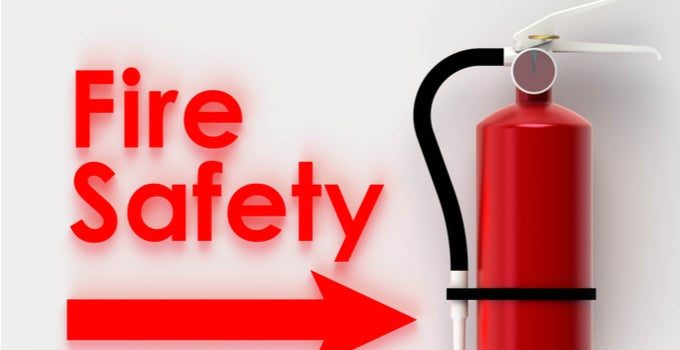

During a recent five-year study by the National Fire Protection Association (NFPA), U.S. fire departments responded to 1,000 home fires every day, on average. That’s 42 every hour!
Today, the average home burns in just three or four minutes, leaving occupants roughly 2-3 minutes to get out (UL).
Basic Fire Safety
1) Have smoke and carbon monoxide detectors
· Install smoke alarms on every level of your home, inside bedrooms and outside sleeping areas.
· Once a month check whether each alarm in the home is working properly by pushing the test button.
· Replace batteries in smoke alarms at least once a year. Immediately install a new battery if an alarm chirps, warning the battery is low.
· Replace smoke alarms every 10 years
2) Create an escape plan
· Walk through the house planning all escape routes and exits
· Agree on a meeting place where everyone will gather after you have escaped
· Discuss the plan with your family
· Make sure each of your children knows what smoke alarms sound like and what to do when they hear one
· Practice your fire escape plan at least twice a year and at different times of the day.
· Practice waking up to smoke alarms, low crawling and meeting outside. Make sure everyone knows how to call 9-1-1.
· Emphasize “get out, stay out.” Only professional firefighters should enter a building that is on fire—even if other family members, pets or prized possessions are inside. Use quick-release devices on barred windows and doors. Security bars without release devices can trap you in a deadly fire. If you have security bars on your windows, be sure one window in each sleeping room has a release device.
· Consider getting escape ladders for sleeping areas on the second or third floor. Learn how to use them, and store them near the windows. The Safer Escape ladder is always available right at your window at all times for immediate escape.
· Teach household members to STOP, DROP and ROLL if their clothes should catch on fire.
3) Do a “Blindfold Test”
· If you really want to train for a major house fire do a blindfold test; both you and the family members, including the kids. In fact, the kids will probably love it.
· Pick a room that you feel that you could get trapped in (i.e. a bedroom). Picture in your mind that the room is very hot and filled with heavy dark smoke, that you can’t even see where the door is. Think that you must get out safely and what path you will escape by.
· Now put on a blindfold and lower yourself to the floor. Crawl along the floor blindfolded, imagining your path in your mind, the barriers and obstacles that you will encounter and how you will navigate around them.
4) Have a fire extinguisher
How well do extinguishers put out fires?
If a fire is caught in its early stages, fire extinguishers can be remarkably effective. According to the National Fire Protection Association (NFPA), they were reported to have put out 5.32 million fires in 2010 alone.
Please contact the Safer Escape team for a price quote, or call (725) 2ESCAPE (237-2273).
